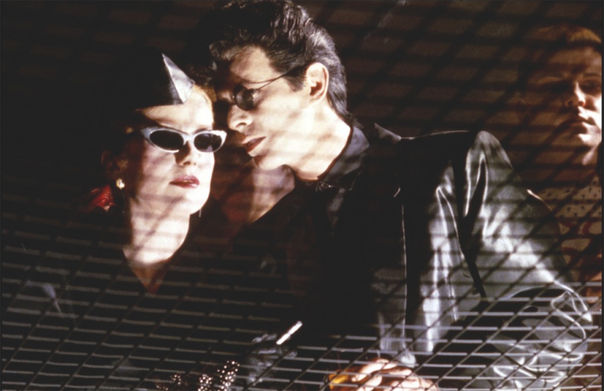The Sexy Vampirism in The Hunger
by Sabrina D. Marques

Forme de vivir
The Hunger (1983) is one of those movies that needs a future. Tony Scott’s commercial objectives permeate this, his first feature film. The result is such a product of its time that it bombed when it debuted. The Hunger could be a case study in the unpredictability of commercial success. It makes the point that a movie is not the sum of a calculable set of variables, and goes beyond esthetic formulas or the stars in the cast.
Catherine Deneuve, David Bowe and Susan Sarandon are the dream team in an erotic vampire drama that takes place in a stylized urban underworld wrapped in the gloom of Ridley Scott’s post-apocalyptic settings. The goth-rock of the 1980s played by the famous band Bauhaus, both in the opening scenes and the credits, repeats Bela Lugosi’s Dead like someone attempting to set the stage for a post-Lugosi revamping of the vampire figure. These vampires are deadly femmes fatales with an ambiguous sexual allure that evokes, with eroticism and terror, a direct relationship between vampirism and sexuality as seen in films like Blood and Roses (Et Mourir de Plaisir. Roger Vadim, 1960) or Jess Franco’s Female Vampire (1975) and Vampyros Lesbos (1971). But Coppola’s Hollywood-sized adaptation of Dracula (1992) did the best job at implanting in the collective imagination the lesbian vampire figure; a hypnotic creature with an insatiable appetite.
If it was panned by critics when it came out, the imprecise plot previously diagnosed in The Hunger speaks to the post-modern tastes, and the visual resources that revealed his background in advertising don’t seem as clichéd as they did then. Now a cult film, it is essential for cinephiles and music lovers, and was a pioneer in connecting underground freedom of the night to the marginality of vampirism, sexual depravity, and punk/rock: Rockula (Luca Bercovici, 1990), Only Lovers Left Alive (Jim Jarmusch, 2014) A Girl Walks Home Alone at Night (Ana Lily Amirpour, 2014). The Hunger is a film that defies classification, and improves with each viewing.

